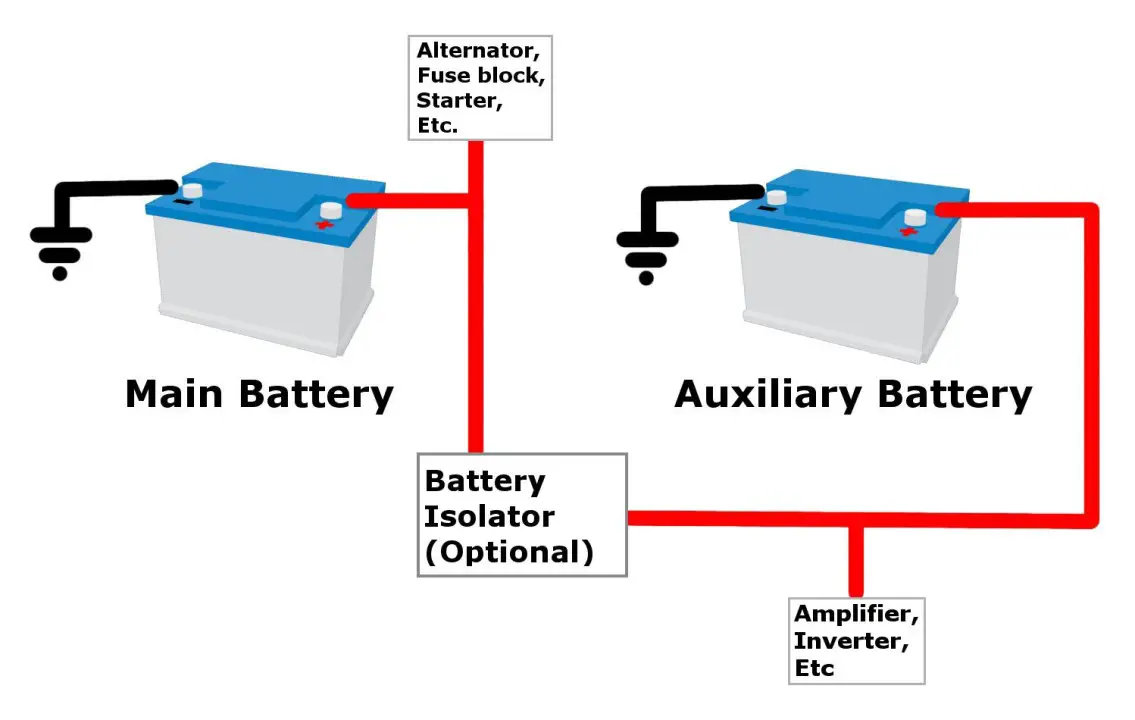Often we hear about Auxiliary batteries, especially in EVs. Although an auxiliary battery is also present in ICE vehicles we call it a battery rather than an auxiliary battery.
Why we call it an Auxiliary battery in EVs as it is an additional battery on top of the main traction battery that is used for powering the motor.
Let’s learn more about What Is An auxiliary Battery, how it functions, and what is the Difference Between Auxiliary Battery And Traction Battery here in this article.
What Is An auxiliary Battery?
An auxiliary battery is a small additional battery used in EVs to power different supplementary equipment like the lights, music system, navigation, and other similar functions.
Only the air conditioner is run by the main traction motor. Apart from that, all other secondary equipment is powered by an auxiliary battery.
We don’t have to charge the auxiliary battery as it will be auto-charged when the motor is running. This is similar to how an IC engine vehicle charges its battery. In an IC engine vehicle, there is one more battery called a starter battery that is used to start the engine.
Typically an auxiliary battery is small in size and capacity. The voltage is around 12V. An auxiliary battery is placed under the hood or trunk or in similar other places in a car.
Auxiliary batteries are typically lead acid batteries but some manufacturers like Tesla are switching to lithium-ion for the auxiliary battery too.
What Is A Traction Battery?
EV batteries are also called traction batteries. They are large in size and capacity. Their capacity is rated in kWh. The more the kWh of the battery, the better will be the range.
Unlike an auxiliary battery, a traction battery stores energy and runs the motor when needed. There will be multiple battery cells contained in a container called a battery pack.
Traction batteries are mostly lithium-ion batteries. Lithium-ion batteries are known for high energy density. This means you can get a high kWh battery pack in a small box which is ideal for EVs
A traction battery is used to run the motor and charge the auxiliary battery. It is also used to run heavy equipment like the air conditioner and the heater.
The traction battery voltage depends on the number of battery cells contained in the battery pack and how much voltage it carries. For example, if a battery pack has 50 battery cells and each battery cell carries 2 volts then the battery pack voltage will be 100V. Typically an electrical car EV battery voltage will be more than 300V.
Difference Between Auxiliary Battery And Traction Battery
Here are some of the differences between an auxiliary battery and a Traction battery.

| Auxiliary Battery | Traction Battery |
|---|---|
| It needs to be charged by an external charger | Used for running the motor |
| Small in size | Big in size |
| Small in capacity | High on capacity |
| It is charged by the traction battery | Typically lithium-ion battery |
| Typically the voltage is around 12V | Typical voltage is more than 300V ( For cars) |
| Typically lead acid battery | Better life than an auxiliary battery but depends on usage |
| Very short life | Better life than auxiliary battery but depends on usage |
| Cheap price tag | Extremely costly (Almost 50% of the vehicle cost) |